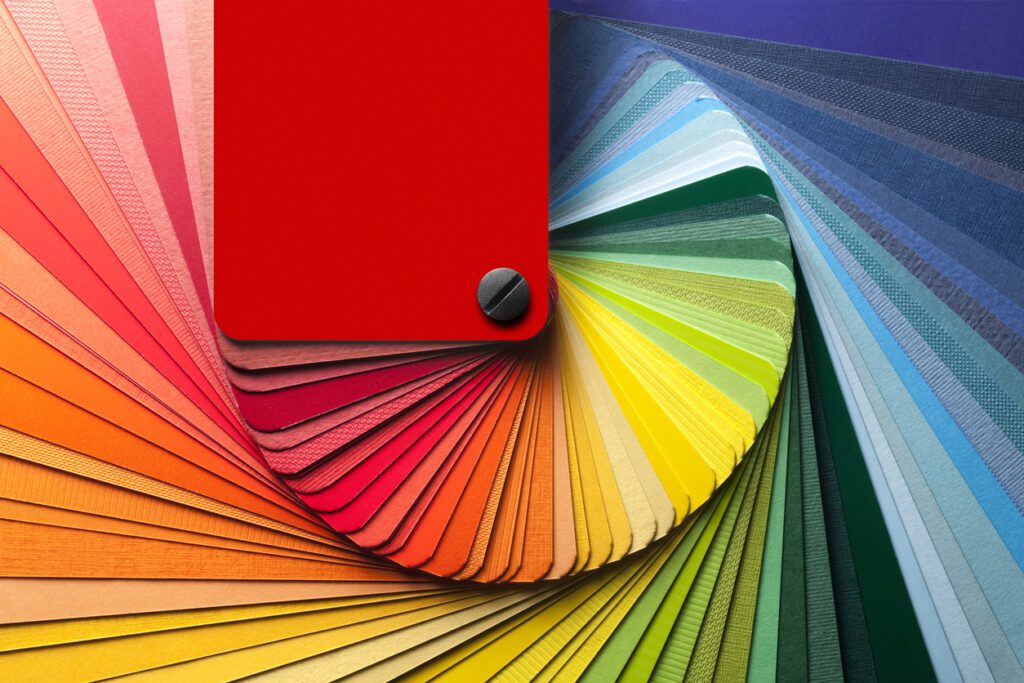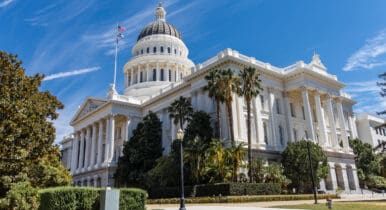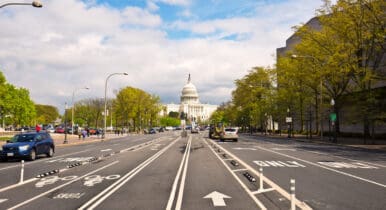How One Strategist Is Bringing Evolution to Advocacy Design

Kelly Johnson has become a master of the rebrand.
It started in college at the University of Mississippi where she studied broadcast journalism but preferred to spend time in the editing bay putting together packages. Then an internship on former Sen. Kelly Ayotte’s (R) 2016 reelect in New Hampshire brought her into the world of graphic design.
She ended up learning the programs, and later followed a creative career path that led to a nearly four-year stint at the RNC. Her time at the committee culminated with Johnson leading a rebrand as creative director.
Three months ago, she joined Narrative Strategies as a senior graphic designer, where she’s now leading rebrands for companies and groups.
C&E: Tell us about the discovery process you go through during these rebrands?
Johnson: I think that a face-to-face environment really helps to kind of see what are they about and what they want. I think a really big driving force is, where does the company want to go? They might have this brand that might be outdated, that might have been adjusted in the past five or 10 years, but what do their members or clients look like right now?
What do they want them to look like in 5-to-10 years? So it takes a lot of research on the front end. We have an amazing team, of people that help us with that research and so that the creative team can really focus on creating concepts, designing, choosing the colors, choosing the fonts, all that kinda fun stuff.
C&E: Is the process different for an advocacy group versus a company?
Johnson: I think for an advocacy group, it’s not just about the organization that you’re representing, but also the people that that [the group] is representing. It has to just be about the people.
So even if the group focuses on, like, building infrastructure it’s having that personal touch and having a face in mind. Who are we trying to represent here? I think it’s really important to make sure that each individual brand has their own style. We do interviews with people on the team and ask them, how do this color make you feel? How does this font make you feel? It all just comes back to how personal a brand can be.
C&E: How long do rebrands typically take?
Johnson: Ideally, you’d have a year to do this. But I would say 3-6 months is standard. But I don’t think it’s a set time. It’s about trying to move as fast as possible without hurting the designs. It just depends on the client, it depends on the team.
C&E: What’s the recommendation on the timing for a rebrand?
Johnson: My last job [as creative director] at the RNC, one of the last things I got to work on there was the RNC’s rebrand, which was a big one. There really wasn’t much done since at least 2016, but I think prior to that. So it was the first time in a good many years that they wanted to change the colors, they wanted to change the fonts. I would say most companies 5-10 years is when they’d like to do a full rebrand depending how long they’ve been around.
C&E: Fonts are so important in advocacy design, tell us about the trends you’re seeing there.
Johnson: People really like those — I’m going to call them old style — but more like old-style professional fonts like a good Times New Roman. They like a Baskerville, which I think is something interesting and I had to kind of grow as a designer to get to that point to be like, ‘Okay, this is a font that I’ve kind of seen my entire life, but people really like it. They like that professional, sleek look.’
People aren’t afraid to use colors. They wanna stick with this kind of classic, old-style font, but they’re not afraid to kind of throw a neon yellow in there when it’s needed. It’s cool to see from an advocacy perspective.
C&E: Any other trends you’re watching?
Johnson: You’re seeing these groups use a lot more modern design styles, and a multitude of secondary color palettes. That’s a big trend that I’ve seen.
There’s also a lot of block print design that I’m seeing. Earthy textures. Also, morphing this concept of using real images of a person or a building and then adding design elements onto that. It keeps people rooted in reality, but it adds a little bit of fun flare with those design elements on top of it. There’s a lot of collage vibes, a lot of paper textures, a lot of natural textures. I think people were inside for so long because of covid that these kind of natural designs and textures are finding people. ‘Hey, there’s an outside. Go embrace it in your design work.’


